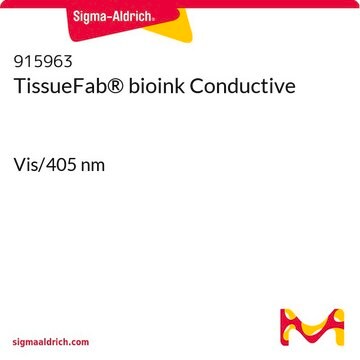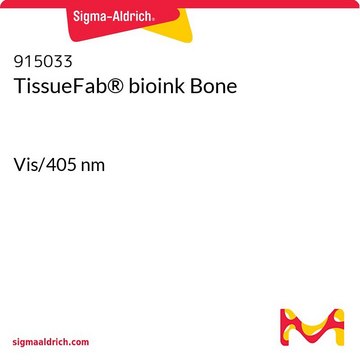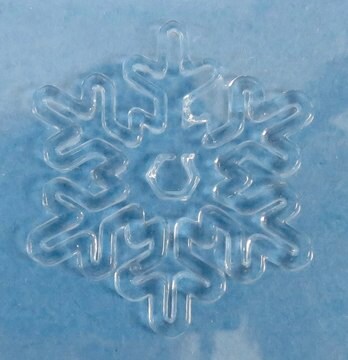Kluczowe dokumenty
918741
TissueFab® bioink
(Gel)ma -VIS/405nm, low endotoxin
Synonim(y):
Bioink, GelMA, Metakrylamid żelatyny, Metakrylan żelatyny, Metakryloil żelatyny
About This Item
Polecane produkty
Poziom jakości
opis
suitable for 3D bioprinting applications
with LAP photoinitiator
sterylność
sterile-filtered
Formularz
viscous liquid
zanieczyszczenia
≤5 CFU/g Bioburden (Fungal)
≤5 CFU/g Bioburden (Total Aerobic)
<50 EU/mL Endotoxin
kolor
colorless to pale yellow
wielkość cząstki
0.2 μm
pH
6.5-7.5
Zastosowanie
3D bioprinting
temp. przechowywania
2-8°C
Szukasz podobnych produktów? Odwiedź Przewodnik dotyczący porównywania produktów
Powiązane kategorie
Zastosowanie
Żelatyna metakryloilowa (GelMA) jest polimeryzowalnym materiałem hydrożelowym pochodzącym z naturalnych składników macierzy pozakomórkowej (ECM). Ze względu na niski koszt, obfitość i zachowanie naturalnych motywów wiążących komórki, żelatyna stała się bardzo poszukiwanym materiałem do zastosowań w inżynierii tkankowej. Dodanie fotosieciujących metakryloamidowych grup funkcyjnych w GelMA pozwala na syntezę biokompatybilnych, biodegradowalnych i nieimmunogennych hydrożeli, które są stabilne w biologicznie istotnych warunkach i promują adhezję, rozprzestrzenianie się i proliferację komórek.
Informacje prawne
Kod klasy składowania
10 - Combustible liquids
Klasa zagrożenia wodnego (WGK)
WGK 3
Wybierz jedną z najnowszych wersji:
Certyfikaty analizy (CoA)
It looks like we've run into a problem, but you can still download Certificates of Analysis from our Dokumenty section.
Proszę o kontakt, jeśli potrzebna jest pomoc Obsługa Klienta
Masz już ten produkt?
Dokumenty związane z niedawno zakupionymi produktami zostały zamieszczone w Bibliotece dokumentów.
Produkty
Biotusze umożliwiają biodrukowanie 3D konstruktów tkankowych do badań przesiewowych leków i przeszczepów; wybór odpowiednich biotuszów do określonej inżynierii tkankowej.
Global Trade Item Number
| SKU | GTIN |
|---|---|
| 918741-1EA | 4065265258210 |
Nasz zespół naukowców ma doświadczenie we wszystkich obszarach badań, w tym w naukach przyrodniczych, materiałoznawstwie, syntezie chemicznej, chromatografii, analityce i wielu innych dziedzinach.
Skontaktuj się z zespołem ds. pomocy technicznej








